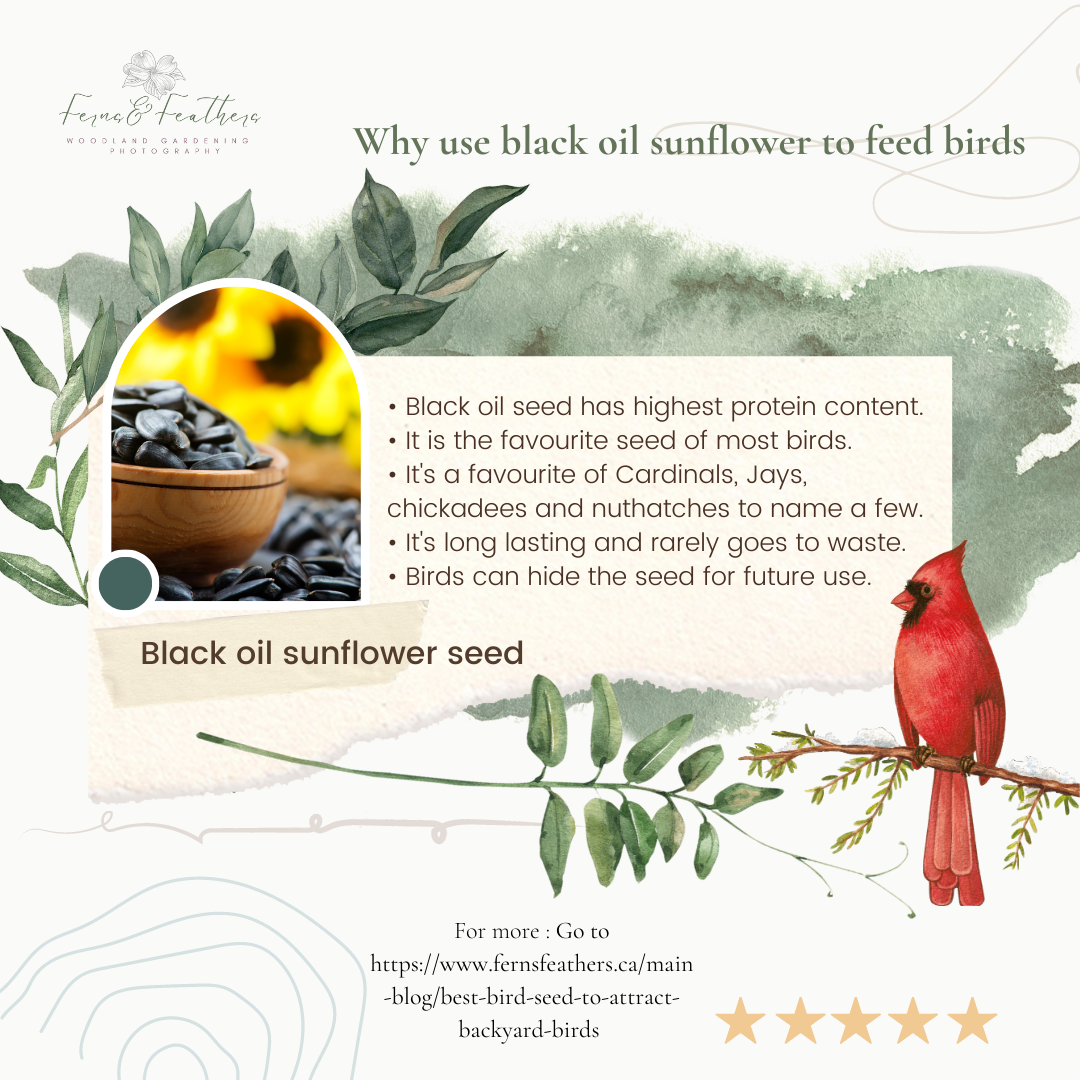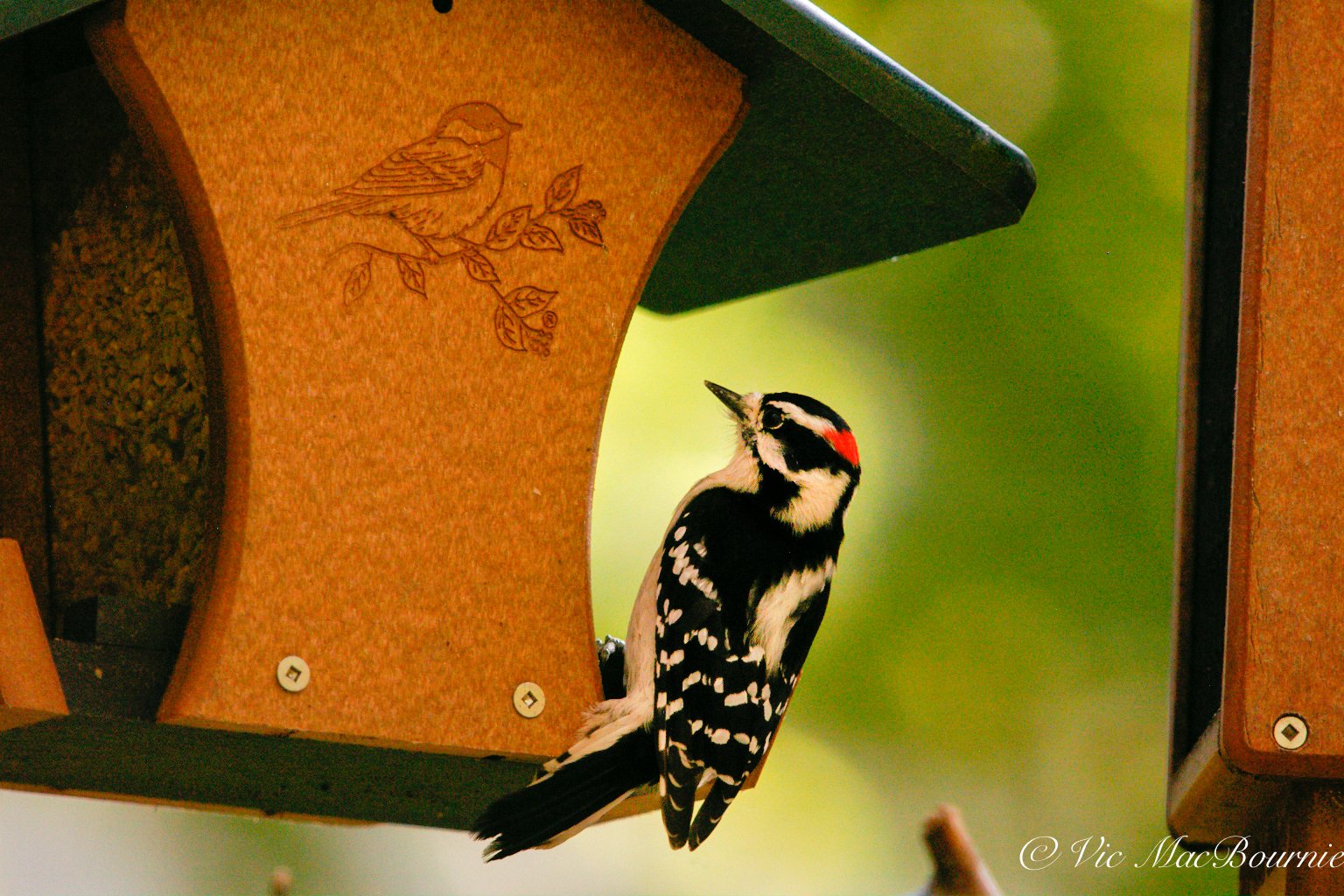Bird seed: Complete guide to attracting favourite backyard birds
How to choose the best seed to attract a variety of birds
If you are looking to attract specific birds to your backyard, providing them with their favourite bird seed will go a long way toward your success.
First, it’s important to learn what seed your favourite birds prefer in your area and then find a good reliable source of fresh seed to provide them.
When in doubt, use straight black oil sunflower seed. It is by far the best overall seed to feed backyard birds. But you may miss out on some of the best birds if you stick to straight black oil sunflower seed.
Don’t make the mistake of using a general, inexpensive bird seed mix from your local department store – many of these blends are full of filler that birds will only spill to the ground.
Milo – a small, round whitish grain – is most often used as filler in inexpensive mixes.
There is nothing wrong with milo. It will not harm birds, but it is not their preferred choice and often ends up on the ground. If you either see a lot of milo in the seed mix, or it is listed as one of the primary additions in the mix, it’s probably best to avoid that seed mix.
The result of too much filler is, at best, a mess under the feeders, and, at worst, an invasion of mice and rats filling up on the discarded feed. (More on keeping mice and rats out of the garden.)
Millet is a good choice for ground foragers
Don’t mistake milo for millet. They look similar, but millet in small quantities is favoured by ground-foraging birds like Juncos, sparrows and mourning doves. It’s still probably best to leave it out of the feeders, but throwing a handful on the ground or in a platform feeder is a good idea.
By keeping the above tips in mind, there are blends at your local department stores that are good, but just recognize they come at a higher cost than the cheap mixes.
You are better off feeding the birds less with a high quality seed mix than filling the feeders with a low quality mix that results in problems and eventually stops you from getting the full enjoyment out of feeding your backyard birds.
It’s also important to realize that birds do not count on our seed to survive. They are quite capable of looking after themselves and their families.
Studies have shown, however, that birds – especially chickadees and other regular visitors to our feeders – do better if supplemental bird food is available.
It is our responsibility to ensure that feeding the birds in our yards is not detrimental to their health. Keeping the feed fresh and the feeders clean should be a top priority.
More reading: Why recycled resin feeders are better than wood feeders.
Black oil sunflower: The best all-round choice
If in doubt, a good quality black oil sunflower seed is an excellent all-round choice that the majority of birds will readily eat.
Black oil sunflower is favoured by most birds because the seeds – in comparison to the common striped sunflower seeds – have a higher oil content, are easier for small birds to handle and are more nutritional for backyard birds. The black oil sunflower seed is extremely high in protein, as well as fiber, calcium, vitamin b-complex, vitamin e, potassium and iron.
They are favoured by our colourful Northern Cardinals, Evening grosbeaks, Blue Jays and House finches, in addition to chickadees, nuthatches, Tufted titmice, Mourning doves, grackles, Gray catbirds, Pine siskins and a host of others.
How to attract Cardinals to your feeders
Most birders enjoy seeing both male and female cardinals at our feeders.
If you are looking to attract these colourful but somewhat shy birds to your backyard, consider providing them with a large hopper feeder filled with a combination of safflower and black oil sunflower seed both in an out of the hull.
By leaning more heavily on the safflower seed, other birds will focus on a feeder filled with black oil sunflower and leave the safflower for the cardinals.
Safflower is a top seed choice for attracting cardinals. One of its other benefits is that it discourages squirrels, grackles and even sparrows from feeders because they dislike safflower seeds.
The small white thin-shelled seed is readily eaten by cardinals, nuthatches and chickadees.
A good mix will attract the greatest variety of birds
Feeding only the small black oil sunflower will limit the type of birds that are regulars at your feeders.
It’s important to offer a variety of seeds to attract the greatest variety of birds.
Compressed seed cylinders have always been a popular choice in our yard. They are available in a number of different mixes including ones that have meal worms compressed in with the seed mixture. Check out my full story on compressed seed cylinders.
Specialized bird or nature stores will even create specialized mixes for different times of the year (winter, summer, spring and fall), for different habitats (woodland, rural, urban, town and country.)
If done well, these mixes can be especially helpful to attract the birds that are in your area either year round or seasonally.
Wild Birds Unlimited, with stores across the United States and Canada, offer seven primary blends ranging from No-mess blends, to a deluxe blend, supreme blend, tree nut blend, finch and wildlife blends. Individual stores may offer further blends developed for birds in a particular geographic area.
Canada’s Urban Nature Store (link to store website) (Amazon.ca link) also offers a host of blends as well as straight seed.
The Kaytee brand of wild bird seed available at Amazon and elsewhere also offer a high quality seed and variety of quality mixes.
Nyjer or thistle seed is a favourite of Goldfinches
There is no question that Goldfinches are attracted to Nyjer or thistle seed, but only if it is fresh and of high quality. Nyjer/thistle seed that is past its prime, or worse, beginning to get mold growing on it, will be ignored by the birds.
But that may not be the only reason the birds are ignoring your thistle or nyjer seed.
Nyjer/thistle seed can be tricky. The seed actually comes from India and is part of their thistle plants. Before the seed can be imported into North America or parts of Europe, the seed must be cooked. Over cooking the seed removes the protein and makes them useless for birds.
If you notice that the finches are not eating your Nyjer seed, chances are it’s either well past its prime, going moldy or was over cooked in the factory prior to packaging.
If you notice the birds are not eating your Nyjer seed, don’t waste your time, purchase a new supply of Nyjer for your feeder.
You are much better off buying smaller amounts of nyjer seed and using it as quickly as possible rather than buying a large bag and storing it for prolonged periods of time.
It is important, therefore, to ensure you buy seed from a reputable seller that moves a lot of stock. Purchasing Nyjer at your local department store may not be the best idea. The seed may have been sitting on the shelves for months before you purchased it.
No-mess mixed seed is a solid choice
I have found that using a no-mess mix heavily weighted with shell-less sunflower seeds is the best choice as the primary food source for birds in the backyard.
It’s expensive, yes. But it has so many benefits that overpower any negative factors around price that it is my go-to seed choice for our recycled resin hopper feeders.
By using less food, and the fact that none is wasted and left on the ground, I feel it is the best value in the long run.
Consider adding in a couple handfuls of shelled black-oil sunflower to make the no-mess seed stretch further.
Birds will most likely store the shelled sunflower seeds in tree bark away from the feeder so it is unlikely to build up on the ground below feeders.
Final thoughts on best bird seed
First, let’s agree that feeding birds can be expensive. It gets even more expensive when most of that seed goes to feeding squirrels, raccoons, mice and rats.
Preventing animals from getting up to the feeders and the feed from getting down to the ground is critical to keeping costs down and deterring these animals.
Using a high quality food that birds will not waste or throw to the ground is an investment worth making. A no-mess mix is an excellent choice and by adding black oil sunflower seeds to your liking you can reduce the overall cost.
Most important, the high quality seed will attract the birds you are trying to bring into the garden and add to the joy and excitement you were hoping for in the first place.
Take the time to find a good source for seed and don’t over feed them to the point that the seed sits for long periods in the elements.
The best and most economical way to feed birds is the natural way through properly landscaping your yard using native flowers, shrubs and trees that include seed, berries, fruits and nuts.
If you are interested in moving in this direction, check out my comprehensive post on using native plants to feed birds.
Over time you can use bird feeders as nothing more than a supplemental feeding station to attract very specific birds.
Happy birding.



